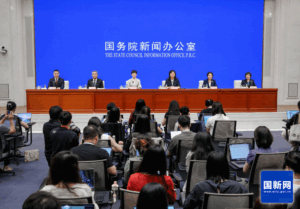The Push for Integration in the Mother-Baby Industry
In recent years, the mother-baby industry has been actively exploring integration strategies. Across several provinces, integration is being promoted in response to market saturation caused by declining birth rates and the rapid rise of online channels. These pressures have weakened the traditional advantages of physical mother-baby retail outlets.
In essence, whether it’s a case of “big fish eating small fish” or strong players merging for mutual benefit, this wave of integration aims to scale operations, gain control over the supply chain in baby retail, and improve profitability. However, the actual progress remains limited, especially compared to sectors like pharmacies and supermarkets. Most integration in the mother-baby industry still resides at the supply chain level.
Related Article: Concerning the integration of maternal and child products, here are four core discussion points

Why Retail Integration Challenges Persist in the Mother-Baby Industry
The core of retail integration challenges in the mother-baby industry lies in the business model itself. Mother-baby stores are uniquely positioned to meet fragmented consumer demands with high-touch service for slow-moving goods, which makes them fundamentally different from standardized, easily replicated models like supermarkets and drugstores.
This operational uniqueness results in major retail integration challenges, particularly when it comes to systematization and modular growth. The nature of the mother-baby retail format makes it difficult to scale or standardize across different markets.
Focus on the Supply Chain in Baby Retail
Due to these limitations, current integration efforts in the mother-baby industry primarily focus on the supply chain in baby retail, especially within fast-moving categories such as formula milk. Despite this, the road ahead is far from simple. Channel merchants face high barriers in creating private brands due to scattered demand and limited customer acceptance.
Most integration efforts are now leaning toward exclusive cooperation with channel-specific products. Yet, this approach is still in a transitional stage, heavily reliant on negotiations between channel providers and manufacturers. Since both parties’ needs continue to evolve, it remains unclear whether this strategy offers a sustainable long-term solution.
Related Article: How This County Town Maternal and Baby Store Succeeds
Digitalization and Human Resource Barriers
Deep integration requires more than just supply chain alignment. It demands robust digital transformation across systems, finance, and customer membership operations. Some SaaS service providers are benefiting from this trend, helping mother-baby stores manage backend operations more efficiently.
However, one of the most persistent retail integration challenges is the “human” factor. Many veteran practitioners in the mother-baby industry, who enjoyed the sector’s golden years, now face multiple barriers:
- Loss of motivation and confidence due to the macroeconomic downturn
- Limited digital skills and resistance to learning new technologies
- Disillusionment from unfulfilled expectations and internal conflicts post-integration
- Cultural clashes after mergers between different retail chains
These human-centric issues significantly hinder the success of retail consolidation strategies.
Beyond Efficiency: Reframing Integration in the Mother-Baby Industry
Although integration aims to boost cost-efficiency and achieve economies of scale, the path is complex and non-linear. At this stage, integration in the mother-baby industry should not only focus on size and supply efficiency but also prioritize user experience and differentiated services.
Stores that cater to evolving consumer expectations—offering services with emotional value, products for the entire family, or premium experiences—are better positioned to thrive despite ongoing retail integration challenges. Whether it’s parenting support, family nutrition, or aesthetic design, stores that enhance the emotional and practical value of their offerings are poised to become long-term leaders.
Related Article: Managing Second Categories in Baby Retail for Growth
Navigating the Future: Survival of the Most Adaptive
Ultimately, the future of the mother-baby industry will not solely depend on who can scale the fastest or integrate the widest, but on who can best understand and serve the needs of modern parents. Those who can tackle supply chain in baby retail challenges while offering highly personalized experiences will stand out in an increasingly competitive environment.
In conclusion, the industry must embrace flexible integration strategies, blending scale with customization, and logistics with emotional connection. Only then can mother-baby retailers overcome current retail integration challenges and secure sustainable growth in this evolving market.




